Description
Product description
Review
The Kitchen Pantry Scientist: Biology for Kids is packed full of fun, educational experiments and activities that are anchored by biographies of biologists who transformed science. This book introduces readers to scientists of color, past and present, who have made significant contributions, but who are often unrecognized because of prejudice. This is such a thoughtful book from Liz Lee Heinecke who continues to provide inspiring resources for engaging kids in STEM
—Stephani Page, PhD (she/her/hers) Biochemist/Biophysicist ARC Network Community Engagement Manager
“Timely…this attractive title will appeal to parents and caregivers who are looking for hands-on, nonscreen oriented activities for student enrichment.”—Jennifer Knight, North Olympic Lib. Syst., Port Angeles, WA, School Library Journal
About the Author
From the Publisher

LAB 15 – Ynés Mexía b. 1870 PLANT COLLECTION/IDENTIFICATION
|
|
|
|
|---|---|---|
A SCIENCE COMMUNICATORAlthough Ynés Mexía was so busy collecting plants that she never finished her college degree, she gathered almost 150,000 species. In thirteen short years, Ynés discovered 500 new plant species and 2 new genera. Between expeditions, she gave lectures in San Francisco, sharing photographs of her journeys and teaching people about plants. Ynés suffered from prejudice because of her Mexican heritage, her age, and her gender, but everyone who knew her said that she was friendly, unassuming, and tough. She died in 1938 in Berkeley, California. |
PLANT COLLECTION/IDENTIFICATIONYnés Mexía had a taste for adventure, braving earthquakes and poisonous berries to track down undiscovered plant species. You can get a taste of Mexía’s passion for botany by gathering leaves and blossoms in your neighborhood or favorite park. This lab teaches you how to press and label plants to create an impressive collection of your own. |
THE BIOLOGY BEHIND THE FUNPreserved plant specimens, such as those collected by Ynés Mexía, provide scientists with important information about plant diversity and distribution. Plants which have been dried correctly can last for hundreds of years. A collection of plant specimens and the recorded data about each plant is called a herbarium. |
LAB 17 Ernest Everett Just b. 1883 CELL PHYSIOLOGY
|
|
|
|
|---|---|---|
A PROFESSORAll of Ernest’s hard work paid off, and when he graduated from college, he became an English professor and then a biology professor at Howard University, where he also helped establish a college drama club. In the summers, he did marine biology research on the coast of Massachusetts, where he meticulously studied the eggs of sea creatures including sea urchins, sand dollars, and sand worms. He focused on cell physiology (how cells function) and carefully observed how the eggs changed during fertilization and development, publishing papers on his work in English and German. |
CELL PHYSIOLOGYErnest Everett Just was interested in cell biology, including how water moves in and out of cells. In this lab you’ll dissolve the shells of raw eggs in vinegar and soak them in corn syrup or water to make them swell or shrivel up. |
THE BIOLOGY BEHIND THE FUNChicken eggs are incubators for growing chicks. The egg white is made up of proteins and water, while the yolk contains nutrients for a growing chick and an ovum, or unfertilized egg cell. If the egg is fertilized, the ovum will divide into more cells and become an embryo. |
LAB 23 Patricia Bath b. 1942 MEDICAL DEVICES/CATARACT SURGERY
|
|
|
|
|---|---|---|
AN OPHTHALMOLOGISTWhen Patricia Bath, now Dr. Bath, returned home to work at Harlem Hospital, she noticed there were more blind patients there than at a neighboring hospital where she also worked. She continued her education, doing a residency to become an ophthalmologist, which is an expert in eyes and vision. When Dr. Bath’s research demonstrated that certain groups of people suffered from more eye problems than others, she wanted to understand why and help address the problem. She set up an eye clinic at Harlem Hospital Center, where they started doing eye surgeries. In 1972, Patricia got married and had a daughter named Eraka. |
MEDICAL DEVICES/CATARACT SURGERYDr. Patricia Bath improved the lives of countless people with her inventions, such as medical devices for cataract surgery. Make binoculars with waxed paper lenses to experience for yourself how cataracts interfere with vision. See how replacing the cloudy lenses with a clear ones improves your sight. |
THE BIOLOGY BEHIND THE FUNThe lens in each of your eyes is suspended just behind the iris, which is the colorful part of your eye controlling the size of your pupil. Because it is a clear structure that focuses light onto the back of your eye to form images, a transparent lens is essential to good vision. Natural ocular (eye) lenses are made up of proteins and water. |
Play disease detective to lean how John Snow tracked down the source of a cholera epidemic! Learn about biologist Ernest Everett Just’s discoveries and experiment with osmosis using eggs with dissolved shells! Make your own agar plates for growing bacteria and fungi just like Fannie Hess!
Aspiring biologists will discover these and more amazing role models and memorable experiments in
Biology for Kids, the second book of The Kitchen Pantry Scientist series. This engaging guide offers a series of snapshots of 25 scientists famous for their work with biology, from ancient history through today. Each lab tells the story of a scientist along with some background about the importance of their work, and a description of where it is still being used or reflected in today’s world.A step-by-step illustrated experiment paired with each story offers kids a hands-on opportunity for exploring concepts the scientists pursued, or are working on today. Experiments range from very simple projects using materials you probably already have on hand, to more complicated ones that may require a few inexpensive items you can purchase online.
Just a few of the incredible people and scientific concepts you’ll explore:
Maria Sibylla Merian (b. 1647)- Observe, photograph and illustrate insects on plants. Scientific concepts: observation and documentation of insect habitat and metamorphosis
Charles Darwin (b. 1809) – Play a competitive advantage game. Scientific concepts: natural selection and evolution
Louis Pasteur (b. 1822) – Make a flask like Pasteur’s to grow microbes from the air. Scientific concepts: microbial fermentation and germ theory
Rae Wynn-Grant (b. 1985) – Use cookie crumbs to attract ants. Observe the behavior of ants and other animals. Scientific concepts: ecology and animal behavior
Biology is the name for the study of living organisms, but long before the word biologist was coined, people around the world realized that by studying the world around them, they could improve their lives. Learning about plants and insects helped them discover new medicines and grow better crops. Studying animals taught them how to raise healthy poultry, cattle, and horses for food, farming, and transportation.
Today’s biologists study everything imaginable. From oceans, jungles, and cities to the space station, the universe is their laboratory. Like those who went before them, they are fascinated by plants, animals, and microbes and understand that their discoveries can make the world a better place for all living things. With this fascinating, hands-on exploration of the history of biology, inspire the next generation of great scientists.






















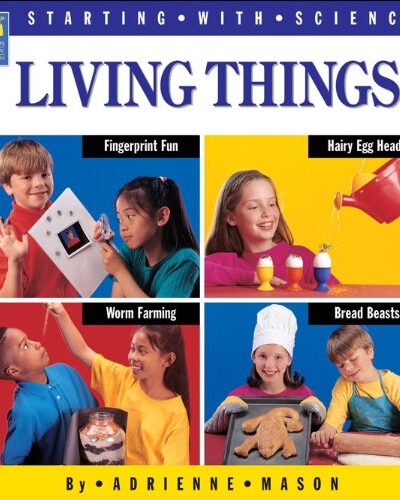

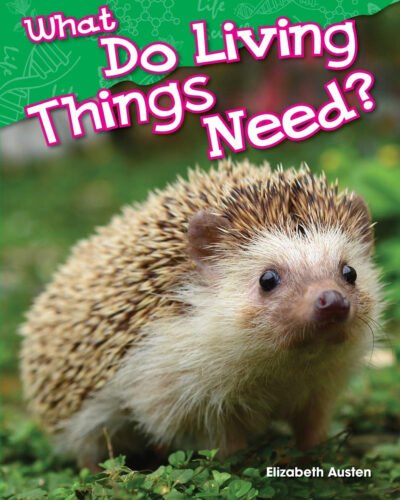
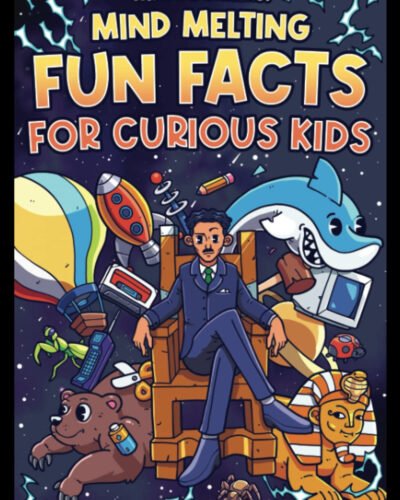
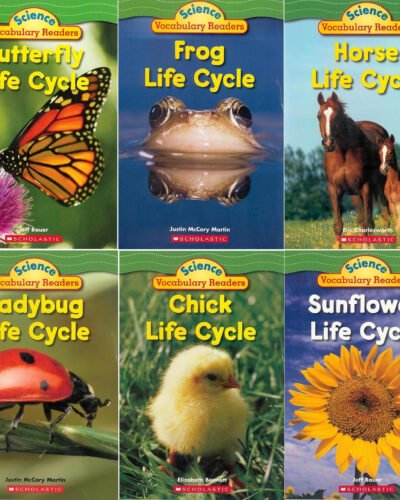

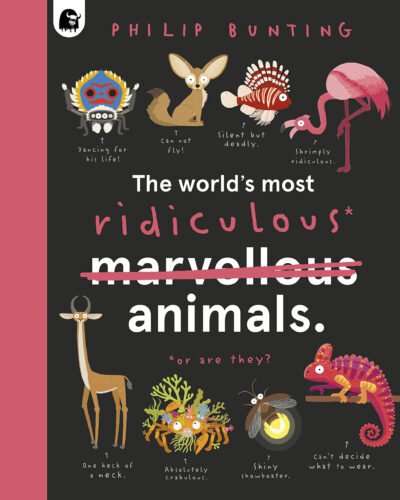

Sabrina Joste –
Fun books
I love all of these kitchen pantry scientist books! They are so informational and full of fun activities. We use them for homeschooling.
Emily Cantilina –
Homeschool science: SIMPLIFIED
So far we have only done 2 chapters. But as a homeschool teachermom who has done other, far more complicated, teacher-intensive science with my kids…. this is where it’s at. It is simple. They do their own journaling. We talk history and science at the same time. YES. My kids are grades 3 and 6. We do this together 2 or 3x/ week.
Becker –
Wonderful!
I love this little lab book!I love that the book is organized into different labs, each one features a scientist and gives some background information on the person and their work. While there are some men featured in the book, it really highlights women, especially women of color.The labs are diverse and interesting and include topics that might not be featured in traditional classes, (For example, there is a lab on ornithology and bird song, and another on biological illustration), and others that are more commonly taught (such as heredity with Gregor Mendel.
Beauty in the Binding –
Looking forward to using in homeschool science studies!
The Kitchen Pantry Scientist Biology for Kids by Liz Lee Heinecke would be a fun book for any budding scientist to use over the summer or in spare time. As it happens, I will be using it as part of our homeschool science curriculum in the upcoming school year. My kiddos will be in 4th and 1st grade and I think this book will do well for both age levels.The Kitchen Pantry Scientist Biology for Kids includes twenty-five “labs”. Each lab consists of an illustrated biography of a biologist and what that person studied/contributed to science. There is at least one activity to complete for each lab section, and I like that there are plenty of step-by-step pictures included for the projects. Often, there’s a small paragraph or two that follows up on more science and information behind the experiment. I can see myself stretching each lab over several school days. Maybe read one page the first day, review and start the activity the second day, finish the activity on the third, review again on the fourth. Most of the activities include things I normally have on hand, but a few will require purchases. Several of them are activities that will take time (such as seed germination).I like that Liz Lee Heinecke included women/people of color and their contributions in The Kitchen Pantry Scientist Biology for Kids. The research on each person seems solid and, as a mom of girls, I am glad to have a resource that shows contributions made by people of every race and gender.I know that many faith-based homeschooling families might be interested to know how much evolutionary theory is included in this book. There is a biography on Charles Darwin. The lab activity for that one is to observe how eggs/seeds float on salt water as well as matching birds to the best habitat for them based on their beaks. Evolution is presented as a theory and I noticed that in other places of the book, there are phrases such as “Scientists believe that … evolved over time…” As someone who subscribes to intelligent design theory over evolutionary theory, I did not have an issue with the material presented here. I think it is a good starter discussion to explore the topic.Overall, I am very pleased with The Kitchen Pantry Scientist Biology for Kids by Liz Lee Heinecke and look forward to using it in our upcoming school year.Disclosure of Material Connection: I received this product via the Amazon Vine program. All opinions in this review are my own.
Memly –
Colorful & Captivating! GREAT Book of Useful Scientific Knowledge Explained For Kids (Or Anyone)
Biology for Kids is just what I needed for the summertime to keep my kids curious, exploring, and having fun. This book is perfect for my 8-year-old (going to 3rd grade). It contains a lot of topics that she is curious about. She is watching the caterpillars in our backyard grow and turn into butterflies. Now she can read all about metamorphosis. She is constantly finding insects and creatures in our yard and neighborhood and asking me which might be related because they move a similar way, make similar sounds, look similar, etc. Now she can learn all about taxonomy and binomial nomenclature. She is very aware that we are still in the midst of the pandemic and that we need to wear masks and wash hands to prevent spreading disease. Now she can read about epidemiology and outbreaks as well as coronaviruses. This book is just so relevant to all the things she is seeing and wondering about. It is easy for her to read, understand, and follow along. There are plenty of colorful photos and illustrations to captivate. What a great resource!In addition, each scientific topic is enhanced by a biography of the scientist credited to its discovery, advancement, or popularization. And with each topic, there are ideas for added enrichment/labs/activities to gain firsthand learning experience. Most of the supplies are items that can be found in most households. We loved the one with water salinity and floating eggs (container, water, salt, egg).Here is a list of topics covered in this book: Biological Illustration & Metamorphosis, Taxonomy & Binomial Nomenclature, Natural Selection & Evolution, Epidemiology & Outbreak, Heredity & Pollination, Pasteurization, Biological Vectors & Mosquitoes, Microbial Fingerprints, Phagocytosis, Agar Growth Medium, Neurons & Neural Network, Bees & Animal Behavior, Public Health & Houseflies, Agrostology, Plant Collection & Identification, Fungi & Penicillin, Cell Physiology, Gene Expression, Zoology, Lambda Phage, Conoraviruses, Ornithology & Bird Vocalization, Medial Devices & Surgery, Pattern Recognition, Carnivore Ecology.There is a lot but I love how it is broken down for young readers so that is digestible and easy to understand. This book is sure to take my child’s understanding, appreciation, application of science to the next level.
N. B. Kennedy –
Activities with nice tie-ins to biology
I was interested in this book because it’s unlike all the other children’s science experiment books I have. Books with science activities generally focus on chemistry activities. While some of the activities in this book are based in chemistry, the explanatory box titled “The Biology Behind the Fun” makes the connection between the activity and its application in nature or the human body.Each chapter begins with a one-page introduction to the scientist behind the concept being explored, such as pollination, natural selection or neural networks. The accompanying activities are mostly simple, with only a few steps (up to 10) and using materials you have around the house or can be found outside. (There are a few exceptions, such as one experiment that requires petri dishes.) But I believe the book is best suited to older children, as the explanations address sophisticated concepts and use quite advanced vocabulary.One thing that would have improved the book for me would have been to see actual photos of the scientists, rather than stylized drawings. I realize that in some cases, that wasn’t possible, as some of the scientists predate photography. I guess the book designers wanted a cohesive look to the book, so every scientist is drawn, even the ones for whom photographs are easily obtainable. I really don’t connect with a drawing; photographs are more compelling to me. They could have been included in the interior pages of the chapter where possible, leaving the drawing as the first page for every chapter.
ChristineMM –
Do Real Science at Home – Plus Biographies
What really impressed me about this book is it has something different than the books that just present science activities you can do with children: it gives a profile of a scientist and explains their contribution to the field. After that introduction, there is a hands-on activity that kids can do at home. There are color photographs to show how to do the activity at home along with text explanations. There seem to be more girls than boys shown doing science in this book and they are also seem to be more minorities than white children. The scientists which are profiled include people who I have never heard of. There are 11 females and 14 males and the people represented are from different ethnic backgrounds. My impression is this book is attempting to be inclusive of all peoples and that there is an intentional push to make the sciences appeal to female children. This is a well written and interesting book. I will be placing this book in my classroom library for my sixth graders to read. This really would be perfect for a homeschooling family or any family who wants to do these activities at home.
Julie –
Not your typical science activity book — unique combination
This book totally hit the spot at our house. My 11 yr old *loves* biographies, and each section opens with a biography of a famous scientist. Win! My 14 yr old loved the topics–taxonomy, evolution, genes, coronaviruses, pattern recognitions. The list of topics felt very modern and relevant. The activities are best suited for younger kids. My tween/teens could do the activities, but they didn’t find the activities all that appealing, though it gave them ideas for things they wanted to do on their own with the science concepts. The activities seemed more like something a parent or adult would lead a kid in doing, but there may be a sweet spot of 8-10 years old when you could both read and do the activities independently and be interested to do so. Some activities required little to no prep or materials. Some required materials. The activities are not focused on the product or an experiment — the activities are genuine extensions of the science concepts explored in the section. This would be a fabulous book for a science teacher, summer camp, or homeschooler to use, too. The Kitchen Pantry Scientist in the title is a bit misleading because it may make you think of books of science experiments you do in the kitchen, which isn’t at all what this book is. It’s the name of the author’s blog. Highly recommended.
EGReviews –
Great resource! Kids love it!
This is an excellent homeschooling resource! There are 25 scientists listed in the book; each one has a one page background and what they were famous for, then the next page is an experiment/activity. The activities are simple and can easily be adjusted for multiple age groups. Our preschooler and 3rd grader love this book!The best part is the background of the scientist isn’t too long, so it keeps the child’s attention.Highly recommend this book! Beautiful illustrations and great activities!
HappyFamily –
I like it
I like it has both picture and also real pictures. It is a fun experiment books and learning with my child together. It has clear instructions.